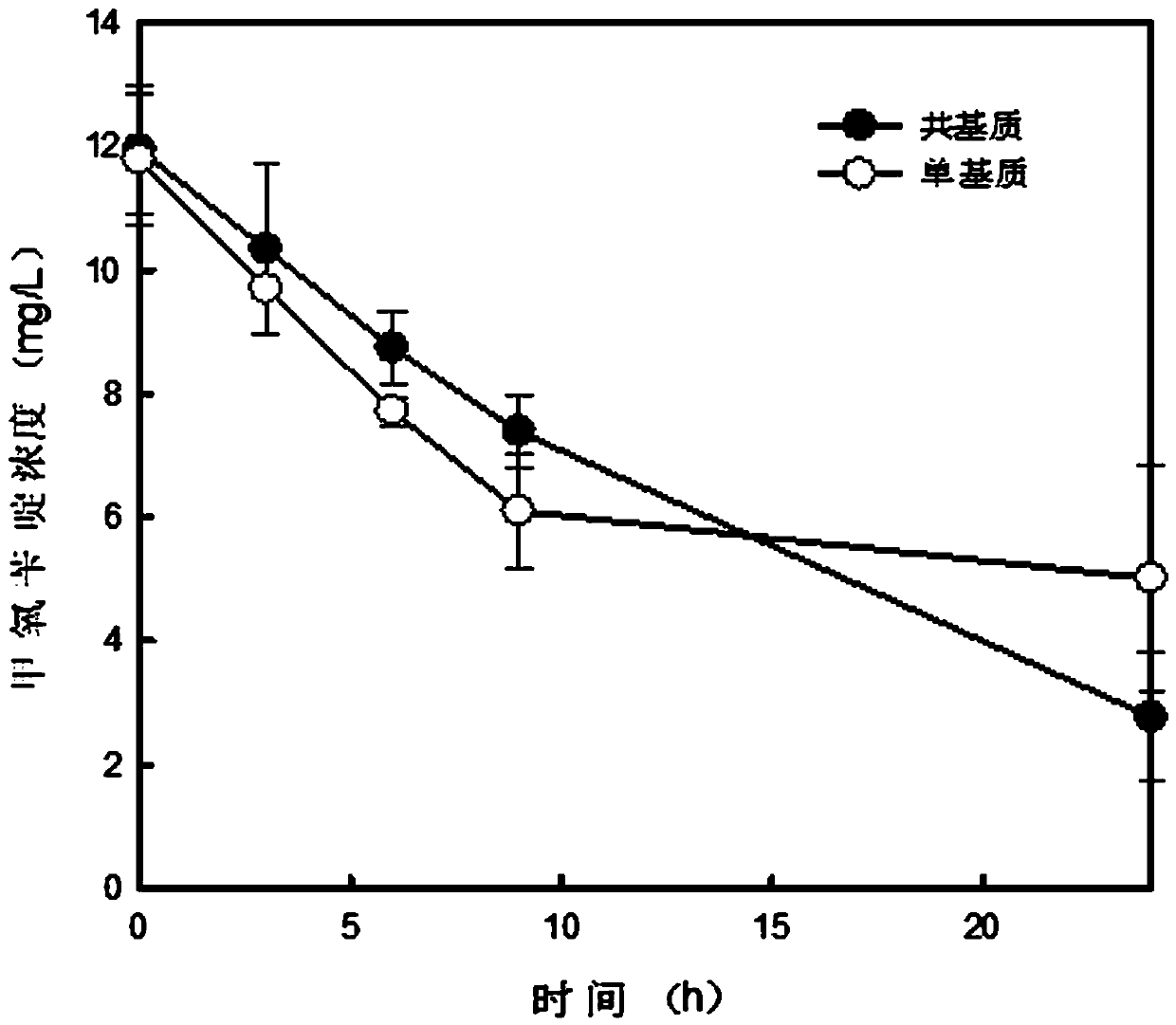Method for degrading trimethoprim by adopting microbial fuel cell
A trimethoprim, fuel cell technology, applied in biochemical fuel cells, chemical instruments and methods, biological water/sewage treatment, etc., can solve problems such as antibiotic residues, ecological environment and human health threats, and achieve high treatment efficiency. Effect
- Summary
- Abstract
- Description
- Claims
- Application Information
AI Technical Summary
Problems solved by technology
Method used
Image
Examples
specific Embodiment approach 1
[0020] Specific embodiment one: this embodiment adopts the method for degrading trimethoprim by microbial fuel cell, specifically according to the following steps:
[0021] 1. Assemble and connect the data recorder: the data recorder is used to record the changes of the current data of the reactor in real time. Choose keithley2700 data logger, assemble and connect.
[0022] 2. Pretreatment of carbon brush electrode and cation exchange membrane: the carbon brush is first washed with deionized water to remove surface impurities, then soaked in acetone for 24 hours, then placed in a muffle furnace, burned at 600°C for 30 minutes, and finally placed in a deionized deionized water for later use; the cation exchange membrane was soaked in saturated sodium chloride solution for 24 h, and then rinsed with deionized water for later use.
[0023] 3. Assembling the reactor: Bipolar chamber microbial fuel cell is adopted. The main body is composed of cathode chamber and anode chamber. Th...
specific Embodiment approach 2
[0026] Embodiment 2: This embodiment differs from Embodiment 1 to Embodiment 2 in that the carbon brush soaked in acetone in step 2 is burned in a muffle furnace at 400° C. for 30 minutes. Others are the same as one of the specific embodiments 1 to 2.
specific Embodiment approach 3
[0027] Embodiment 3: The effective volume of the single-pole chamber reactor is 28 mL. Others are the same as one of the specific embodiments 1 to 2.
PUM
| Property | Measurement | Unit |
|---|---|---|
| Diameter | aaaaa | aaaaa |
Abstract
Description
Claims
Application Information
 Login to View More
Login to View More - R&D
- Intellectual Property
- Life Sciences
- Materials
- Tech Scout
- Unparalleled Data Quality
- Higher Quality Content
- 60% Fewer Hallucinations
Browse by: Latest US Patents, China's latest patents, Technical Efficacy Thesaurus, Application Domain, Technology Topic, Popular Technical Reports.
© 2025 PatSnap. All rights reserved.Legal|Privacy policy|Modern Slavery Act Transparency Statement|Sitemap|About US| Contact US: help@patsnap.com


